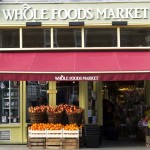
When a major supermarket shuttered its doors in the ultra-hip Silver Lake neighborhood in Los Angeles earlier this spring, rumors started swirling that a Whole Foods Market was moving into the space. If you think about how desirable Silver Lake has become in recent years, it makes perfect sense.
In 2012, Silver Lake took the top spot on Forbes’ inaugural list of America’s Best Hipster Neighborhoods. Today, property values are at an all-time high. The median home price is currently $816K, which is up 0.8% from last year. With Whole Foods’ planned move scheduled for later in 2015, it makes sense to predict that the value of surrounding real estate will continue on an upward trend.
Studies have shown that valued local amenities like department stores, grocery stores, movie theaters, and other major traffic generators are attractive to homebuyers and add to the belief that an area is up-and-coming. In the real estate industry, businesses like these are called “anchors.” Whole Foods is arguably one of the best examples of an anchor.
In the past, Whole Foods has moved into neighborhoods that make you scratch your head and wonder what the heck they’re doing there. Washington, D.C. got one near Logan Circle in 2000. The brand moved into Uptown New Orleans and the East Liberty section of Pittsburgh in 2002, and infiltrated Boston’s “Latin Quarter” in Jamaica Plain in 2011. All of these areas were on the verge of a boom that kicked into high gear as soon as Whole Foods moved in with its premium-priced produce.
Coincidence? Some think so. But it’s more likely that the corporate decision-makers at Whole Foods are just really good at identifying neighborhoods on the up-and-up, and that the store’s presence accelerates the gentrification process. At least that’s what evidence suggests. A 2007 study from Johnson Reid found that property values increase an average of 17.5 percent after specialty grocery stores like Whole Foods open nearby.
While it’s unlikely that Whole Foods is solely responsible for an area’s increase in home prices, the store does bring consumer traffic. This large customer base often shops, eats, and spends money at surrounding businesses, encouraging a plethora of new stores to open. In turn, the neighborhood becomes an even more desirable place to live, ultimately raising property values.
Related: Whole Foods & Trader Joe's Provide a Healthy Boost to Nearby Homes
THE TAKEAWAY
If you’re in the market to buy a home, purchasing in close proximity to a Whole Foods could help your resale value. That is, as long as you can get in before prices go up.
This guest post was originally published by Girls Guide to Real Estate. Main image by Rex Features



